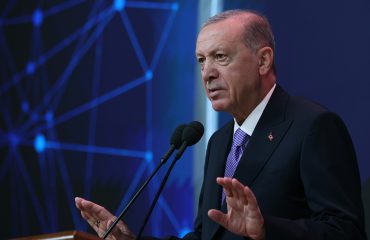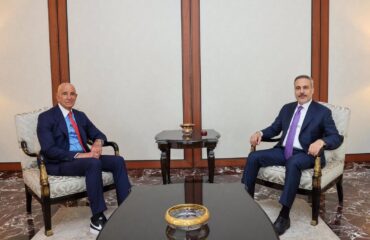
One of the key requests that Turkish President Tayyip Erdoğan is likely to make to U.S. President Donald Trump is to drop his support for the SDF military and their backbone, the Kurdistan Workers’ Party (PKK); the latter was designated a terrorist organization by the U.S. as well. But according to well-informed official sources on the matter, Trump, who agreed to pull the said forces back to a depth of 32 km (20 miles) from a 120 km section of the Turkish-Syrian border may turn this offer down or at least play with time while continuing to provide military support to these forces.
Trump’s justification for keeping U.S. troops in Syria has been the protection of the oil fields from being seized again by the ISIS if they revive. By coincidence or not, most of the oil regions where support to the SDF forces will continue are the Kurdish-populated areas in Syria. Sources told YetkinReport that the main reason for keeping the troops there might have to do with a new “proxy war” concept developed by the U.S. Special Forces and Central Command (CENTCOM) and adopted by the Department of Defence, Pentagon, in 2018.The concept which is described as an “operational approach” rather than a doctrine, is called “By-With-Through” by its major developer, Joesph Votel, the ex-commander of CENTCOM.
The By-With-Through concept
In an article Votel penned together with Strategy Analyst Colonel Eero Keravuori issued in the April 2018 issue of the Joint Force Quarterly magazine, the general, now retired, described the concept as “a way of conducting military activities and operations with less direct combat employment of the U.S. forces.” The article has a foreword, a quote from former Secretary of Defence James Mattis: “Our approach is by, with and through our Allies, so that they own these spaces and the U.S. does not; which might have further agitated Ankara’s concerns that a Kurdish state is being cultivated next to its borders.
Votel gives examples from Yemen, Afghanistan, Iraq and Syria on making local partners fight against “common enemies”, under the U.S.’s command and assistance, “By-With-Through” (BWT). He also wrote that the “significant difference” of the Syria case was that their partner was not the host nation, Bashar al-Assad’s Syrian government but the SDF, which is considered as outlawed by Damascus and named “non-state actor” by the U.S.
Sources talking to YetkinReport on condition on anonymity underlined that this significant difference makes Syria a “test case” for the BWT approach with non-state actors.
In an interview published on the same issue of the magazine, Votel says that the core of the SDF was the People’s Protection Units (YPG), which is the Syria branch of the PKK. The organisation was established with a Marxist-Leninist program in 1978 and some 50 thousand people have been killed in its armed campaign against Turkey since 1984.
The possible cost of supporting PKK
It was actually the U.S. government which has designated the PKK as a terrorist organization in the 1990s as a sign of solidarity with its NATO ally Turkey, and it was the CIA which helped the Turkish intelligence MIT in the arrest of the PKK’s founding leader Abdullah Öcalan in 1999. Öcalan had had his headquarters in Syria from 1979 to 1998 when he was expelled upon Turkish pressure on Damascus.
“The enemy of my enemy is my friend” has been a motto which failed its followers many times throughout history. In Afghanistan, the U.S. has supplied training, command and arms to Mujahideen against the Soviet invasion in the 1980s, which resulted in the emergence of the Taliban and al-Qaeda. ISIS has been a by-product of the invasion of Iraq. ISIS is an enemy for all, including Turkey but the U.S. partner against ISIS in Syria is also an enemy for Turkey in a neighbourhood with Russia gaining strength.
Both Votel and Mattis have gone but Pentagon’s stance seems firm on BWT approach and keeping on the PKK affiliates at its disposal. Trump has his own concerns about keeping his place strong but can think twice considering the possible consequences of the Pentagon persistence on the SDF.


